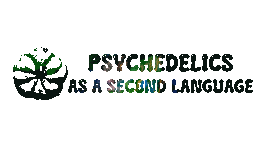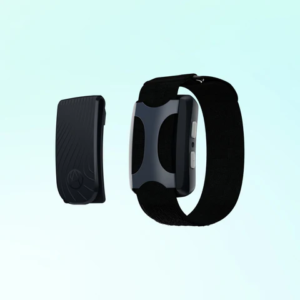Entheogen healing or Peak experience? Both!
Depending on how we perceive the world and our beliefs, psychedelics can be potential tools to aid in the treatment of mental illness, party drugs, or compounds that help us explore ourselves, and to some, psychedelics are tools to explore the realms of the spiritual world.
Typically, these two insights rarely mix as the psychedelic community on the scientific and spiritual tend to split.
However, this might be changing soon!

The Beckley Foundation, alongside the Imperial College of London, the University of Sussex, the University of Oxford, and the University of California, brought us an interesting study that may connect how spiritual transcendent experiences, or ‘peak experiences’ in the psychonaut world, may predict positive results in mental health outcomes in therapy, such as reductions in depression and anxiety, and also reduced craving in substance abuse disorders.
Unlike the plethora of literary research we have on the effects of psychedelics on the central nervous system (CNS), the team of researchers decided to follow the lead of Williams James, who claimed the body and the brain are intrinsically and dynamically linked, perceptions, emotions, and cognitions influence and respond to the state of the body. Hence, the team shifted their focus to the importance of biological mechanisms like the Autonomic Nervous System (ANS) during a psychedelic experience.
To comprehend such research, we must first grasp the concept of the autonomic nervous system.
The ANS consists of two main branches;
-
- The sympathetic nervous system (SNS) is responsible for our flight-or-fight stress response.
-
- The parasympathetic nervous system (PNS) is responsible for states of rest, recovery, and energy conservation.
Accordingly, the sympathetic nervous system (SNS) is linked to emotional arousal and heightened physiological activity associated with positive or negative emotions, such as joy and anxiety. Once we ingest a serotonergic psychedelic (which activates the serotonin receptors), the sympathetic nervous system also becomes active and causes physiological changes such as:
-
- Pupil dilation,
-
- Increased heart rate,
-
- Blood pressure
-
- Increased levels of stress hormones like cortisol and epinephrine.
On the other hand, the parasympathetic nervous system (PNS) is active in processes that promote relaxation, energy storage, and homeostasis following stress. While the activity of the PNS links to positive and prosocial emotions, its connection to emotional experiences is far more complex. Psychedelics don’t directly activate the PNS. However, they can induce a vagal rebound effect, where the PNS becomes active after an initial stress response that helps the body regain balance.
What makes this interaction more complicated to understand is the fact that other studies suggest that the serotonin 2Ar receptor antagonist ketanserin can block or reduce the psychoactive effects of psychedelics and increase PNS activity, leaving us with questions unanswered.
Nonetheless, we did get one answer regarding the SNS and PNS that may be the root cause of the link between the emotional states and physiological manifestations during peak experiences.

Until recently, it was believed that the sympathetic nervous system (SNS) and parasympathetic nervous system (PNS) operated reciprocally, but this has been proven not to be the case. These systems operate varying reciprocally, independently, or coactively. This simultaneous activation of both branches is called sympathovagal coactivation. The sympathovagal coactivation may be the reasoning behind the link between the emotional states and physiological manifestations during the peak experiences, such as feelings of ecstasy or transcendence, which often come with physical responses such as chills and increased heart rate.
Additionally, the research states the differences between peak experiences and contemplative states obtained during meditation. These states may lead to similar self-transcendent experiences but are typically associated with increased parasympathetic activity.
We’ve figured out that the emotional and physiological link may be a result of the sympathovagal coactivation, but when we think about psychedelic therapy and psychedelic healing, we often think about emotional flexibility and other states. What could be the reasoning behind that?
According to the authors, the sympathovagal balance between the SNS and PNS might play a key role in promoting emotional flexibility, stress resilience, and adaptive responses, which are crucial in navigating the challenging emotional states that psychedelics often evoke. Finding such a balance might be essential for fostering the transformative peak experiences that lead to positive mental outcomes. Furthermore, the sympathovagal coactivation, where both branches of the ANS are active simultaneously, may reflect the intense emotional arousal experienced during these states.
To understand more about the relationship between the ANS activity and the subjective experiences of individuals during psychedelic experiences, the team decided to use DMT due to its short duration of action. This brief time window allowed researchers to monitor fluctuations in autonomic activity, such as changes in heart rate or blood pressure, and how these are related to subjective reports of peak experiences and subsequent mental health outcomes more accurately.
By understanding the profiles of SNS and PNS fluctuations throughout a DMT experience, we can clarify the connection between physiological markers and the emotional intensity of the experience. The study proposes two main points. First, beginning the psychedelic experience in a state of greater balance between sympathetic and vagal activity may help facilitate peak experiences. Second, those peak experiences are likely associated with simultaneous sympathetic and vagal activation. These insights could help in designing and optimizing psychedelic therapies to improve therapeutic outcomes.
Could this be a second step for psychedelic therapy?
Let us know!

